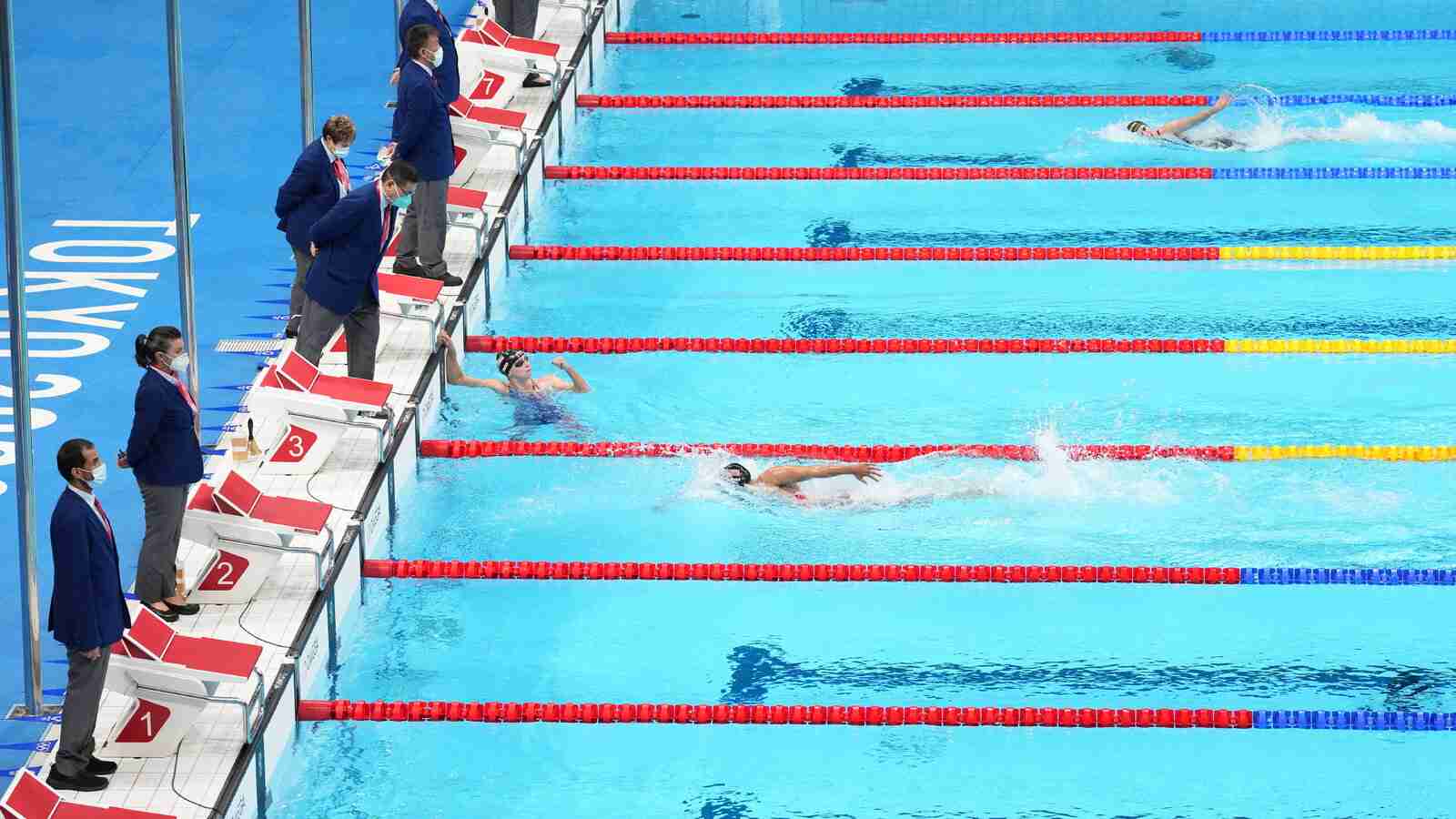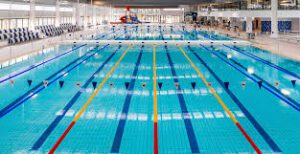
Olympic swimming pools are a measured and set standard for swimming competitions, from the Olympic Games to local, regional, and national championships, swimmers are trained to perform a 50-meter length of an Olympic swimming pool.
Whenever an Olympic swimming pool is constructed, there are some rules and regulations that one needs to be aware of, and how can you make that pool secure and safe for your users to use it.
In this guide, we will cover:
The main regular body that’s concerned with the size and key features of competition pools is the World Aquatics Federation formerly known as FINA, they ensure a one uniform approach to international competition which is then adopted down below on the international level too.
While WAF doesn’t tell you what sort of materials should one use when building an Olympic-size pool, they just set in some dimensions such as geometry, dimensions, distribution, color of pool equipment, etc.

Pool length
The length of an Olympic pool must be 50 meters, if there are equipment touch panels at both ends, then the length between two panels must be 50 meters.
Dimensional Tolerances
The dimensional tolerances allowed for Olympic swimming pools are +0.010, and -0.000 meters when touch panels are used.
Width
For the Olympic games, the standard width must be 25 meters in permanent pools and 26 meters in temporary ones.
Depth
For Olympic games and world championships, all Olympic pools must have a minimum depth of 2.50 meters.
Depth
For a regular competition, there is no minimum number of lanes, however, for the Olympic Games the pool must have 8 lanes with a width of 2.50 meters and an outer space of 2.50 meters. In some exceptional cases, it can have 9 or 10 lanes.
Lane Ropes
Lane ropes are there to separate swimming lanes from other swimmers and to keep them in a straight line, the diameter of the lane rope shall be 010 meters minimum and 0.15 meters maximum. For the Olympic Games and World, a standard diameter should be 0.15 meters.
Water Conditions
The most optimal and best water temperature for an Olympic pool must be somewhere between 25°C and 28°C, keeping a constant level throughout the competition without a noticeable swing.
For an optimal and efficient water system for these types of pools, an innovative solution is in the market that unifies three treatment technologies in a single product which helps to control:
On the other hand, Nefrona water treatment is a solution that is most likely a plug-and-play concept, designed for temporary events, Nefrona includes disinfection, filtration, and pumps for recirculation system in the same monobloc, obtaining excellent water quality. Also, all models can be supplied with heating and microfiltration using diatomaceous earth.
In conclusion, we can say that to make an Olympic swimming pool one has to follow strict World Aquatics regulations and must abide by them, these go even far beyond simple lengths and optimal water treatment, and pool builders need to be more careful to ensure that they have met all the safety requirements in the country where the competition is going to take place.